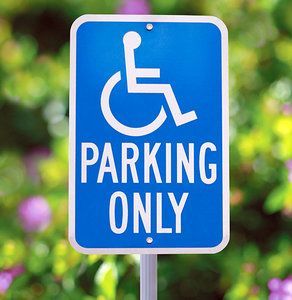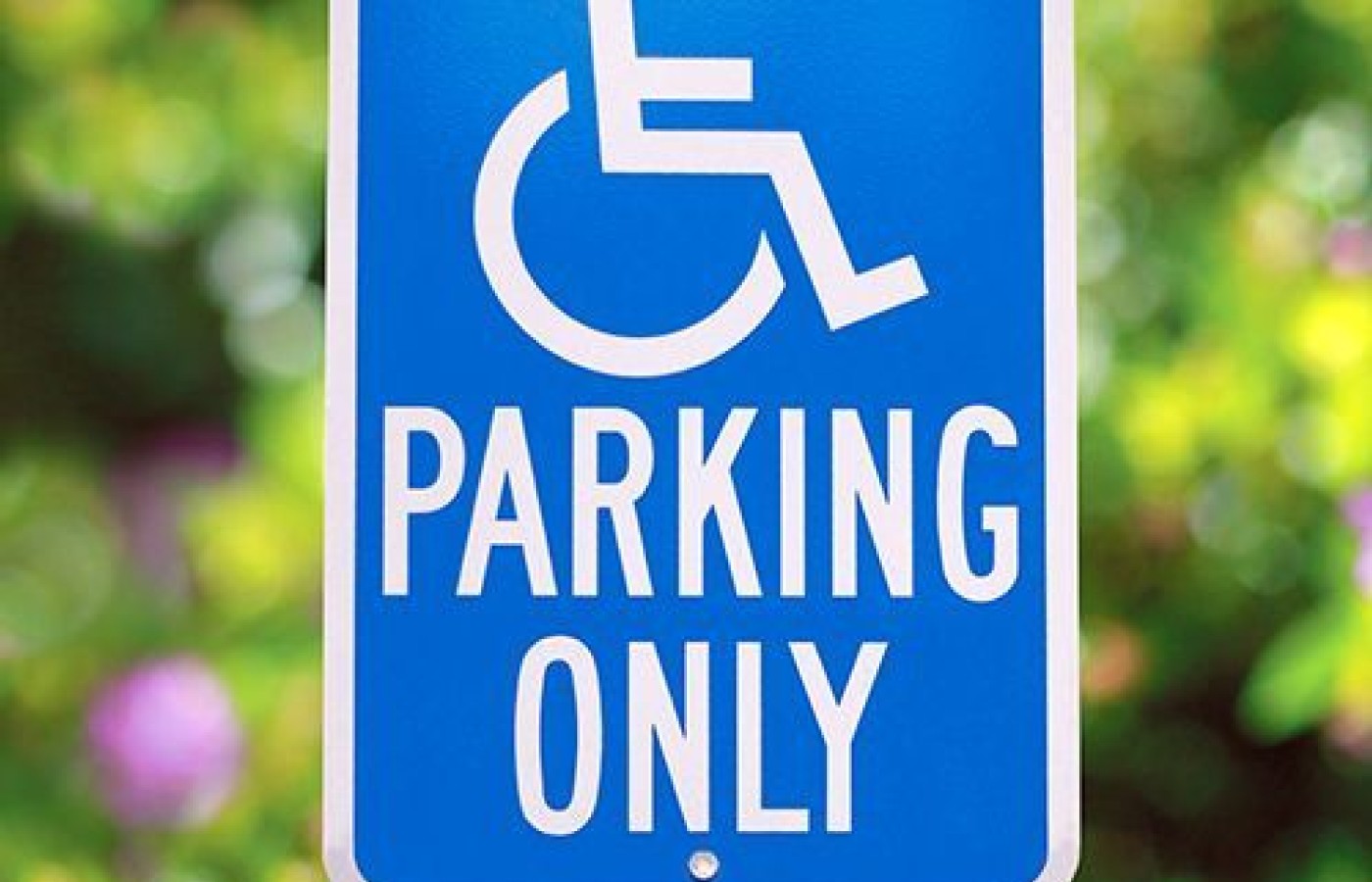Many relevant diagnostic signs are not performed deliberately by the examiner or by the patient at the examiner’s direction. They are observed as the patient reacts to their condition. Fortin’s finger sign, Minor’s sign, and Vanzetti’s sign are three examples of this principle.
Why DCs Need to Understand the Principles of "Inclusive Design"
In the past few columns, I've written about the negative effects of prolonged sitting at work. I've attempted to make the point that prolonged sitting (or prolonged standing) takes a toll on workers. Now let's discuss a related issue: the concept of "inclusive design."
As you might imagine given this introduction, inclusive design is the concept that things (e.g., tools, work spaces, offices) should be designed so they are easy to use by as many people as possible. Given the fact that many of our patients are elderly, in poor health and have difficulty with simple tasks (e.g., opening doors, walking) the chiropractic profession should take whatever steps are necessary to make our clinics easier to use.
In any discussion of ergonomics, it is worth noting that the human frame appears to be getting bigger. This places a strain on the principles of inclusive design. In taking this into consideration, it is worth thinking about our patients when doing everyday business tasks such as purchasing chairs for the reception room. For example, instead of chairs with arms that limit access to larger individuals, perhaps chairs with no arms, or wider seats, might be more useful.

In an attempt to adapt to the times, the American Medical Association recently decided that "obesity" is a disease. For some individuals, obesity is truly a disease and out of their control. For others, obesity is more of a lifestyle choice. Whatever the cause, consider the impact this will likely have on the health care system.
For example, when an obese worker develops a problem because their chair is too small, their desk is too high or they don't have enough leg room, it can reasonably be argued that ergonomists are to blame. In a similar manner, the doctor is individually culpable if a patient is injured in their clinic.
The Benefits of Inclusive Design
Back to the concept of inclusive design. The British Standards Institute defines inclusive design as "the design of mainstream products and/or services that are accessible to and usable by as many people as reasonably possible without the need for special adaptation or specialized design." The goal is to make things available to 95 percent of the population. In fact, the 95th percentile is a target number. In other words, the goal is to optimize the fit for the majority of people. A good fit has the following benefits:
- Occupational injuries and illnesses are reduced
- Worker's compensation, sickness and accident costs are reduced
- Medical visits are reduced
- Absenteeism is reduced
- Productivity increases
- Quality is improved
- Scrap is reduced
- Worker comfort on the job is improved
The Anthropometric Factor
Many of the components of inclusive design are built around the study of anthropometrics. That's sort of a $10 word for body size. It's one of the principal elements in the science of ergonomics. After all, it's difficult to design things to fit the average person if you don't know what size their body parts are.
Anthropometry is the science of measuring body parts. It plays an important role in industrial design, clothing design, ergonomics and architecture. It would behoove chiropractors to look at the size of their patients when designing and/or upgrading their clinics, particularly these days with obesity a growing issue.
For the most part, ergonomists rely on data compiled by Dr. Stephen Pheasant in his book Body Space: Anthropometry, Ergonomics and the Design of Work. The book is a bit of a classic in ergonomic circles and was recently updated by Dr. Pheasant (now deceased) and Christine Haslegrave. It is now in its third edition.
Much of the data comes from relatively normal-sized individuals. In fact, many of the dimensions are taken from British male adults ages 19-65. However, as mentioned earlier, the world is changing, particularly the Western part of the world. While there may be numerous reasons for this (part is due to our changing diet and part to a more sedentary lifestyle), the bottom line is the human frame is getting bigger. This is likely to have a tremendous impact on the design process.
Obviously it isn't possible to design something to fit every person. Former NBA player Shaquille O'Neal comes in at 7 feet, 1 inch tall and more than 300 pounds. That's a fair amount bigger than the average person. Contrast this to Vern Troyer, better known as "Mini Me" in the "Austin Powers" movies. He's only 2 feet, 8 inches tall.
Things that fit O'Neal are unlikely to fit Troyer and vice-versa. Once again, the goal of inclusive design is to make things available to 95 percent of the population. Neither O'Neal nor Troyer would be included in this 95 percent.
Guiding Principles
The principles of inclusive design developed at North Carolina State University include the following:
- Equitable use: The design is useful and marketable to people with diverse abilities.
- Flexibility in use: The design accommodates a wide range of individual preferences and abilities.
- Simple and intuitive: Use of the design is easy to understand, regardless of the user's experience, knowledge, language skills or current concentration level.
- Perceptible information: The design communicates necessary information effectively to the user, regardless of ambient conditions or the user's sensory abilities.
- Size and space for approach and use: Appropriate size and space is provided for approach, reach, manipulation and use, regardless of the user's body size, posture or mobility.
- Tolerance for error: The design minimizes hazards and the adverse consequences of accidental or unintended actions.
- Low physical effort: The design can be used efficiently and comfortably, and with a minimum of fatigue.
Inclusive Design in Action
- Wide interior doors and hallways
- Lever handles for opening doors, rather than twisting knobs
- Light switches with large, flat panels rather than small toggle switches
- Buttons on control panels that can be distinguished by touch
- Bright and appropriate lighting, particularly task lighting
- Ramp access in swimming pools
- Closed captioning on television networks
Bringing It Home: Your Practice
What relevance does all this have to the chiropractor in private practice? Actually, a lot. If we consider some of the items in the examples above, our clinics could be accessible to a wider range of people (patients):
- Wide interior doors and hallways are useful for the patient on crutches or whose ambulation is impaired.
- Lever handles for opening doors are likely to assist all of those (staff included) with arthritic hands or with conditions such as carpal tunnel syndrome. (Light switches with large, flat panels rather than small toggle switches are also useful for this group.)
- Bright and appropriate lighting in hallways is very useful for the elderly patient who may have some difficulty seeing in dimly lit areas. And in areas of the country that get dark at an early hour during the winter, it is important to pay attention to outdoor lighting.
- Task lighting can assist all of those who work on computers (this includes not only patients, but also staff members such as billing personnel and front-desk individuals).
- Some attention should be given to the outdoor areas of our clinics (e.g., ease of parking and access to the building).
Improving accessibility and/or the clinic experience can only assist the chiropractic practice. In order to keep up and provide modern clinics for our patients, the chiropractic profession will gain whenever we make them more "user-friendly." Although many of the principles of inclusive design are not mandatory in older construction, the forward-thinking practitioner will benefit from making as many of these changes as possible.
As the world and the population changes, the challenges for ergonomists and the principles of inclusive design grow. After all, 95 percent isn't what it used to be.



